5 Ways to Improve Bone Health
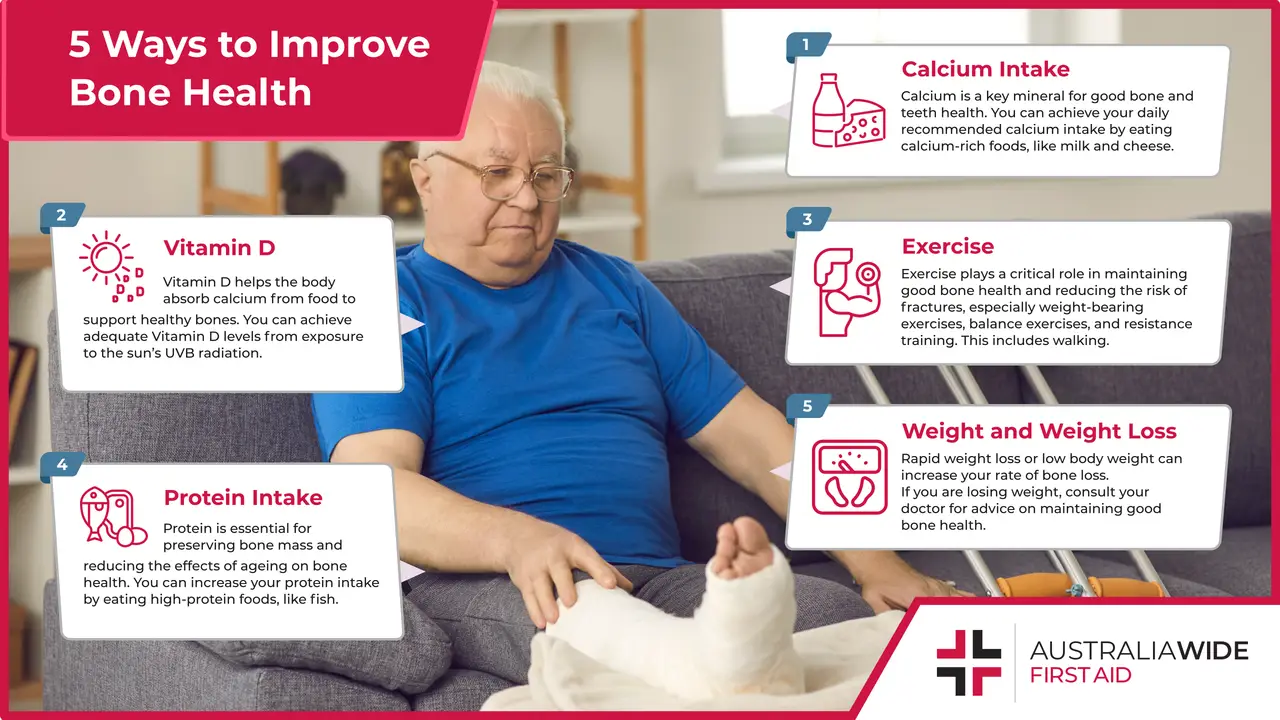

Bone health refers to the strength and structural integrity of your bones.
When your bones lose essential minerals than can’t be replaced, they reduce in density, which compromises the strength and structure. This condition is called osteoporosis, and it increases your risk of fractures and breaks.
With over 206 bony structures within an adult body, bones play an integral part in protecting vital organs, facilitating movement, storing essential compounds and minerals, and providing support and structure to the body. As you age, you gradually lose bone mineral density, which can affect the strength and structural integrity of bony structures.
People with low bone mineral density or osteoporosis have a higher risk of fracturing or breaking bones, and once this has occurred, they are at an even significantly higher risk of more fractures in the future. In fact, according to Healthy Bones Australia, poor bone health leads to 173,000 broken bones each year in Australia.
As a fracture is typically the first indicator of poor bone health, it is important to incorporate healthy habits into your lifestyle that improve bone health to not reach this critical point. Here are five ways you can start to improve your bone health!
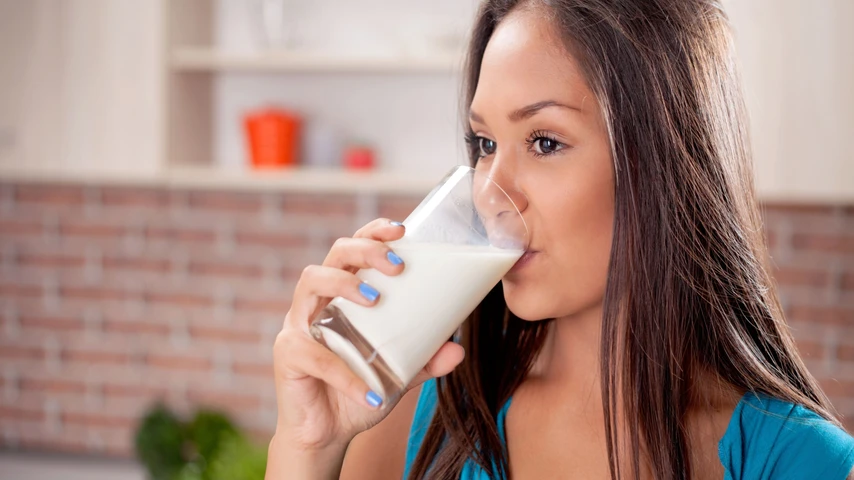
Calcium intake is an essential factor in maintaining healthy bones. According to Healthy Bones Australia, half of all Australian adults do not meet the daily requirements for calcium intake. Commonly associated with bone and teeth health, calcium is also a key mineral for the healthy functioning of your muscles, vital organs, and blood vessels.
99% of the body’s stored calcium is located within bones. If your diet does not include enough calcium to maintain the specific levels required for healthy functioning, the body will access the calcium stored within your bones. If this process is continuous over a long period, you will gradually lose bone density, which negatively impacts the strength of your bones.
The easiest way to achieve your daily recommended calcium intake is to add calcium to your diet. This can be achieved by incorporating high calcium foods such as cheese, milk, and yoghurt. It is worthwhile noting, national bodies like Dairy Australia help ensure that the dairy you put in your body is produced sustainably and to the highest quality. Additionally, you can take a calcium supplement as directed by your pharmacist or doctor.
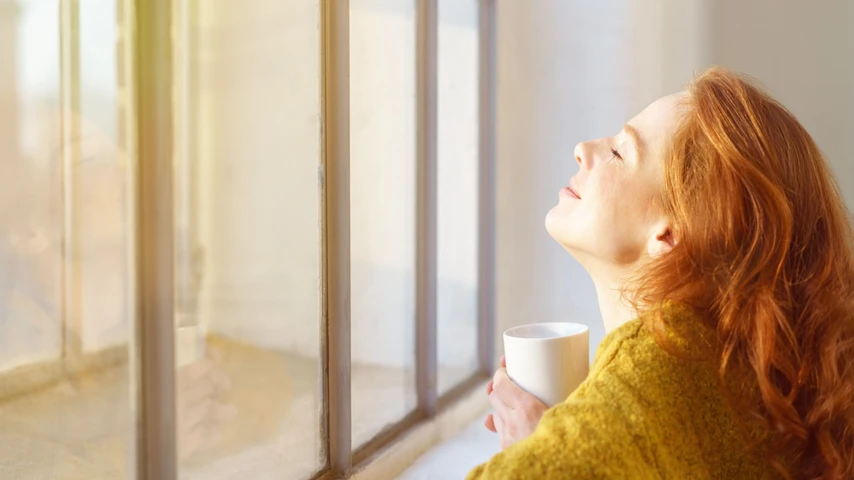
Vitamin D helps the body to absorb calcium from food to support healthy bones. It also plays a role in the growth and maintenance of bones, as well as regulating blood calcium levels. However, over 30% of Australian adults have a Vitamin D deficiency. This deficiency can have harmful effects on the body, such as bone and joint pain, and it can even be a significant factor in the development of bone conditions like osteopenia and osteoporosis.
Despite what many people believe, food does not provide you with an adequate amount of Vitamin D to assist in the calcium absorption process. Although foods such as egg yolks, liver, and oily fish do contain small amounts of Vitamin D, the best source of Vitamin D for Australians is spending time in sunlight.
Vitamin D is best produced when skin is exposed to ultraviolet B (UVB) radiation from the sun. For most people, adequate Vitamin D levels can be achieved through incidental sun exposure throughout the day. This can vary based on the season and location in Australia. The Cancer Council outlines the daily UVB requirements for different areas of Australia.
If your Vitamin D levels are extremely low, a doctor or pharmacist can prescribe a Vitamin D supplement. This can assist in improving your Vitamin D level, although it may take several months to see this improvement.
Not only is exercise beneficial for your overall health, research shows that it also plays a critical role in maintaining bone health. However, specific exercises have more benefits on bone health than other forms of exercise due to the impact or strain placed on the bones.
The Healthy Bones Guidelines set by Exercise and Sports Science Australia outline that weight bearing exercises, such as walking, jogging, dancing, or tennis, are one of the more beneficial forms of exercise for bone health. Resistance training, which utilises gym equipment, exercise bands, or bodyweight, has also been found to promote bone health. For older adults, it is also encouraged to incorporate balance exercises, such as Tai Chi, into your lifestyle to reduce the risk of falls, which can result in fractured or broken bones.
Protein intake is essential for preserving bone mass and reducing the effects of ageing on bone health. Research has found that older adults who consume adequate levels of protein have higher bone mineral density, a slower rate of bone loss, and decreased muscle weakness, which reduces the risk of falls and fractures.
It is recommended that adults consume between 46 – 56 grams of protein each day, which can be achieved through eating high-protein foods such as dairy products, meat, poultry, and fish.
Body weight is one of the key indicators of bone mineral density. According to Harvard Health, having a low body weight or rapidly losing weight is likely to increase the amount of bone loss you experience. This is due to the decrease in weight bearing on the bones, which typically require mechanical stimulation to grow.
If you are trying to lose weight or have done so due to a medical condition, such as menopause, it is important to consult your doctor on the impacts this may have on your bone health. During these periods of weight loss, increasing calcium and Vitamin D intake can help with preventing further damage to the bone.
With bones having such an important role in everyday functioning, it is essential that they maintain structural integrity and strength to support you through your lifespan.
By implementing these five easy tips into your current lifestyle, you can improve your bone mineral density, reduce the effect of bone loss with ageing, and continue living a healthy, pain-free lifestyle.

March 25, 2025
Explore non-traditional paths to sobriety, including mindfulness, yoga, nutritional therapy, and community-based support, for a personalized approach to recovery.
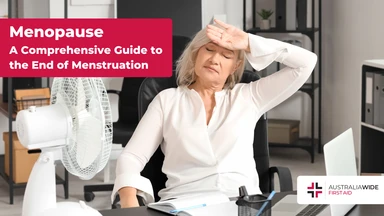
September 7, 2022
Menopause is the final period, when a woman, trans man, or non-binary person assigned female at birth's ovaries run out of eggs and the body can no longer ovulate. Menopause comes with several symptoms, complications, and treatment options.
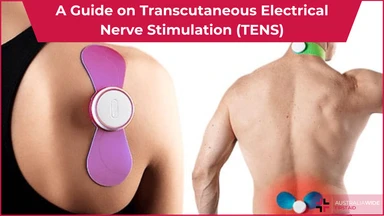
July 26, 2024
Transcutaneous Electrical Nerve Stimulation (TENS) is a therapeutic method of pain relief. It utilises an electrical device that emits electrical currents and streams the impulses via electrode patches attached to the skin.